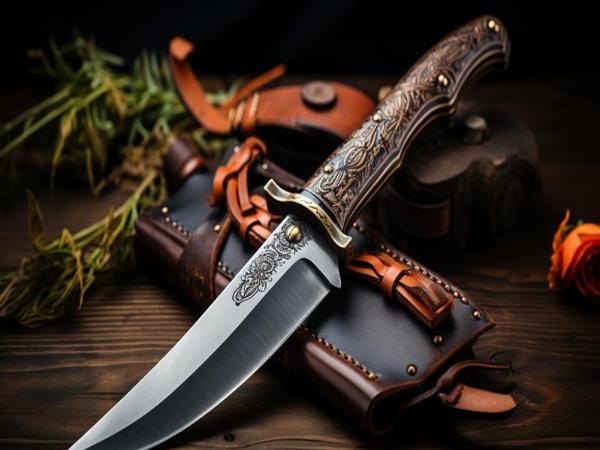What Makes A Good Hunting Knife

Strong 8k brings an ultra-HD IPTV experience to your living room and your pocket.
A high-quality hunting knife is an essential tool for any outdoor enthusiast. Whether you are field dressing game, preparing campfire meals, or performing survival tasks, having a reliable knife can make all the difference. But what exactly makes a good hunting knife? Here are the key factors to consider when choosing the perfect blade.
1. Blade Material
The material of the blade is crucial to the knife's performance and durability.
Stainless Steel
Pros: Corrosion-resistant, low maintenance, and retains sharpness well.
Cons: Slightly harder to sharpen compared to carbon steel.
Carbon Steel
Pros: Superior edge retention, easier to sharpen, and very durable.
Cons: Prone to rust and requires regular maintenance.
Damascus Steel
Pros: Unique aesthetic patterns, excellent edge retention, and combines the strengths of different metals.
Cons: Expensive and may require more care.
2. Blade Design
The design of the blade affects its functionality for various tasks.
Drop Point
Features: A thick, strong blade with a convex curve.
Uses: Ideal for general use, field dressing, and skinning.
Clip Point
Features: A thinner blade with a concave curve or "clip" at the tip.
Uses: Great for precision cutting and tasks requiring a sharp point.
Gut Hook
Features: A hook on the spine of the blade.
Uses: Specifically designed for field dressing, making the process cleaner and more efficient.
Skinning Blade
Features: Curved blade with a wide belly.
Uses: Perfect for skinning game without damaging the meat.
3. Handle Material
The handle material impacts comfort, grip, and durability.
Wood
Pros: Comfortable, traditional feel and aesthetically pleasing.
Cons: Can be affected by moisture and temperature changes.
Synthetic Materials (e.g., G-10, Micarta)
Pros: Highly durable, resistant to moisture, and provides a secure grip.
Cons: Less aesthetically pleasing to some.
Rubber
Pros: Excellent grip and shock absorption.
Cons: May degrade over time with exposure to harsh elements.
4. Handle Design
The design of the handle should ensure a comfortable and secure grip.
Ergonomics: A well-designed handle fits comfortably in your hand, reducing fatigue during prolonged use.
Finger Guard: Protects your fingers from slipping onto the blade.
Non-Slip Grip: Textured or contoured handles offer better control, especially in wet conditions.
5. Full Tang Construction
A full tang knife, where the blade extends through the handle, provides maximum strength and durability. This construction is essential for heavy-duty tasks and ensures the knife won’t break under pressure.
6. Sheath Quality
A good sheath is necessary for safely carrying and protecting your knife.
Leather Sheath
Pros: Durable and offers a classic look.
Cons: Requires maintenance to prevent drying out and cracking.
Synthetic Sheath (e.g., Kydex)
Pros: Highly durable, weather-resistant, and low maintenance.
Cons: Less traditional appearance.
7. Size and Weight
The size and weight of the knife should be appropriate for the tasks you plan to perform. A good hunting knife balances heft with ease of use.
Compact Knives: Easier to carry and handle, suitable for detailed work.
Larger Knives: Provide more leverage and are better for heavy-duty tasks.
8. Versatility
A versatile hunting knife can handle a range of tasks, from field dressing and skinning to camp chores and self-defense. Look for features such as a multi-purpose blade design and additional tools like saw teeth or a gut hook.
Conclusion
Choosing a good hunting knife involves balancing various factors such as blade material, design, handle comfort, and overall construction quality. By considering these elements, you can find a knife that not only meets your specific needs but also enhances your overall hunting experience. Equip yourself with the right tool, and you’ll be prepared for any challenge the wild throws your way.
Note: IndiBlogHub features both user-submitted and editorial content. We do not verify third-party contributions. Read our Disclaimer and Privacy Policyfor details.


